Chamomile and Lavender: Herbal Calm for Emotional Fluctuations
Introduction
Emotional ups and downs are part of being human. But when mood swings start to feel overwhelming — when anxiety, irritability, or tension seem to appear out of nowhere — nature offers two time-tested allies: chamomile and lavender 🌿.
These fragrant herbs have soothed restless minds and heavy hearts for centuries. Today, modern research confirms what herbalists have long known: both chamomile (Matricaria chamomilla) and lavender (Lavandula angustifolia) can calm the nervous system, ease anxiety, improve sleep, and support emotional balance — naturally and safely.
In this in-depth article, we’ll explore how these botanicals work, the science behind their emotional effects, and how to incorporate them into your daily life for steady, serene well-being.
Looking for supplements for Brain Fog? Click here.
🌸 The Emotional Rollercoaster: Understanding Fluctuations

Emotional fluctuations — whether due to stress, hormones, or fatigue — are often a sign of an overstimulated nervous system.
When you’re under chronic pressure, your brain releases more cortisol and adrenaline. These stress hormones can disrupt serotonin and GABA — neurotransmitters responsible for calm and stability.
💬 The result?
Mood swings, anxiety, restlessness, or that vague feeling of being “on edge” — even when nothing’s wrong.
That’s where calming herbs like chamomile and lavender shine: they help your nervous system slow down, rebalance neurotransmitters, and restore emotional resilience.
🌿 Chamomile: Nature’s Gentle Tranquilizer
Few herbs are as soothing as chamomile, a daisy-like flower known for its honeyed aroma and stress-relieving powers.
Used for centuries in Greek, Egyptian, and Ayurvedic traditions, chamomile has earned its title as “nature’s tranquilizer” — a gentle remedy for both mind and body.
⚗️ Active Compounds and Mechanisms
Chamomile’s calming effects come from its bioactive constituents:
Apigenin: A flavonoid that binds to GABA receptors, creating mild sedative and anti-anxiety effects.
Bisabolol & Chamazulene: Anti-inflammatory compounds that reduce physical tension and stress-related inflammation.
Flavonoids: Antioxidants that protect neurons and support serotonin balance.
💬 In essence: chamomile quiets the mind by mimicking the same calming pathways as GABA — your brain’s “brake pedal.”
🌼 Research on Anxiety and Stress
Modern studies back up chamomile’s soothing reputation:
A 2016 Phytomedicine study found that chamomile extract reduced generalized anxiety disorder (GAD) symptoms as effectively as low-dose medication, with fewer side effects.
A 2009 Journal of Clinical Psychopharmacology trial confirmed significant reductions in anxiety and irritability after 8 weeks of chamomile supplementation.
A 2012 Alternative Therapies in Health and Medicine study found that inhaling chamomile essential oil lowered cortisol levels and improved mood in participants under stress.
✨ Chamomile’s effect isn’t sedation — it’s gentle nervous system restoration.
🌙 Chamomile and Sleep
Poor sleep worsens emotional volatility. Chamomile tea or extract improves both sleep onset and quality, especially when anxiety is the barrier.
A 2017 Journal of Advanced Nursing trial found that postpartum women who drank chamomile tea daily experienced better sleep and less depression after 2 weeks.
🌼 It’s one of the safest, most nurturing bedtime rituals for emotional steadiness.
💜 Lavender: The Fragrance of Calm
If chamomile is the mind’s gentle whisper, lavender is its deep, steady exhale.
With its rich purple blossoms and unmistakable aroma, lavender has been a symbol of relaxation since ancient Rome — where it was added to baths, oils, and bedding to soothe tension and induce calm.
⚙️ Lavender’s Calming Chemistry
Lavender’s therapeutic properties come primarily from its volatile oils, especially:
Linalool
Linalyl acetate
These compounds interact with the limbic system — the brain’s emotional center — to reduce anxiety and regulate mood.
💬 They gently lower heart rate, blood pressure, and stress hormone output — helping you “come down” from mental overdrive.
🌸 Research on Anxiety and Mood Disorders
Lavender’s effects on mood are among the most studied in herbal medicine.
A 2012 International Journal of Neuropsychopharmacology study showed that oral lavender oil capsules (80 mg/day) were as effective as Lorazepam (Ativan) for reducing anxiety, without sedation.
A 2015 Frontiers in Pharmacology review confirmed that lavender aromatherapy and oral extracts improved anxiety, depression, and sleep quality in multiple clinical trials.
A 2010 European Neuropsychopharmacology paper found that lavender oil reduced restlessness, irritability, and disturbed sleep in patients with generalized anxiety disorder.
✨ Lavender doesn’t numb emotions — it restores balance between calm and alertness.
🌿 The Brain Connection
Lavender interacts with GABA receptors, much like chamomile, but also affects serotonin pathways and the hypothalamic-pituitary-adrenal (HPA) axis — the body’s stress-control system.
This dual action explains why lavender can simultaneously relax and uplift, rather than sedate.
Looking for supplements for Brain Fog? Click here.
🌼 The Synergy: Chamomile + Lavender for Emotional Balance
When combined, chamomile and lavender create a powerful yet gentle synergy.
Chamomile primarily soothes the body’s stress response and quiets the mind, while lavender enhances emotional balance and resilience.
Together, they:
✅ Promote GABA and serotonin activity
✅ Reduce cortisol and adrenaline
✅ Improve sleep and mood stability
✅ Ease physical tension and restlessness
💬 They’re like yin and yang for your nervous system — one calms, the other uplifts.
🌙 How to Use Chamomile and Lavender
🍵 Herbal Tea
A warm cup of tea is one of the simplest ways to experience the emotional benefits of these herbs.
Calming Tea Blend Recipe:
1 tsp dried chamomile flowers 🌼
½ tsp dried lavender buds 💜
Optional: honey or lemon balm for added calm 🍯
Steep 5–10 minutes, inhale deeply, and sip slowly before bed or during anxious moments.
💬 The aroma alone can start calming your nervous system before you even take the first sip.
🌿 Aromatherapy
Lavender and chamomile essential oils are among the most researched for aromatherapy-based stress relief.
How to Use:
Add 3–4 drops to a diffuser.
Mix 1 drop of each into a carrier oil (like jojoba or coconut) and apply to wrists or temples.
Add 6–10 drops to bathwater for full-body relaxation.
A 2015 Complementary Therapies in Medicine study showed that inhaling lavender or chamomile for 15 minutes lowered heart rate and anxiety before medical procedures.
✨ Scent has direct access to the limbic brain — where emotion lives.
💊 Supplement Form
For more consistent therapeutic effects, standardized extracts can be taken in capsule or tincture form.
| Herb | Typical Dose | Timing |
|---|---|---|
| Chamomile extract | 220–1100 mg/day | With meals or before bed |
| Lavender oil capsule (Silexan®) | 80 mg/day | Morning or midday |
Both herbs can also be combined in calming supplements that support stress resilience and sleep quality.
🌬️ Breathwork, Herbal Calm, and the Mind-Body Connection

Pairing chamomile and lavender with breathwork enhances their effects.
When you breathe deeply and slowly, you activate the vagus nerve — lowering heart rate and cortisol, just like these herbs do.
🌫️ Try This “Herbal Calm Breath”:
Inhale through your nose for 4 seconds.
Hold for 2 seconds.
Exhale through your mouth for 6 seconds.
Repeat 8–10 times while sipping your tea or inhaling the oils.
🧘 The result: instant grounding and an amplified sense of calm.
Want to try Breathwork? Click Here.
💤 Emotional Regulation Through Sleep Support
Sleep and emotional balance are inseparable — and both herbs promote restorative sleep by relaxing the nervous system before bedtime.
Lavender oil inhalation or a chamomile capsule before bed:
Increases time spent in deep sleep
Reduces night awakenings
Improves next-day mood and focus
A 2020 Sleep Health study found that participants using lavender aromatherapy before sleep reported 20% fewer mood fluctuations the next morning.
🌿 Sleep isn’t a luxury — it’s emotional maintenance.
Looking for online therapy ? Click Here.
🌼 Chamomile and Lavender in Hormonal Mood Swings
Both herbs shine during PMS, perimenopause, or postpartum emotional shifts.
Chamomile reduces uterine tension and irritability, while lavender alleviates hot flashes and anxiety by stabilizing serotonin and estrogen-related pathways.
A 2019 Journal of Obstetrics and Gynaecology Research study showed that aromatherapy with lavender and chamomile reduced PMS-related anxiety, bloating, and mood swings after just one menstrual cycle.
💬 When hormones fluctuate, herbal calm helps you stay steady inside.
💜 Beyond Mood: Physical and Emotional Healing
Chamomile and lavender don’t just soothe the mind — they calm the body’s stress signals, too.
Reduce tension headaches 🤕
Ease muscle tightness and cramps
Support digestion (chamomile is a gentle antispasmodic)
Lower blood pressure (lavender’s vasorelaxant effect)
✨ They help your body remember how to relax — something modern life often makes us forget.
🌸 Pairing with Other Natural Mood Support
Chamomile and lavender form the base of many holistic mood support stacks, blending beautifully with:
| Nutrient | Synergy | Benefit |
|---|---|---|
| Magnesium | Supports GABA receptors | Deep calm and relaxation |
| B Vitamins | Boost serotonin and energy | Stable mood |
| L-Theanine | Promotes alpha waves | Relaxed focus |
| Omega-3 Fatty Acids | Reduce inflammation | Emotional steadiness |
| Ashwagandha | Lowers cortisol | Stress resilience |
💊 Stack idea:
Morning → Lavender capsule + B-complex
Evening → Chamomile tea + Magnesium glycinate
🌿 Safety and Considerations
Both chamomile and lavender are exceptionally safe when used correctly.
⚠️ Precautions
People allergic to ragweed should use chamomile cautiously.
Lavender essential oil should be diluted before skin use.
Avoid combining with sedatives without guidance.
Pregnant or breastfeeding women can safely enjoy tea or aromatherapy, but high-dose extracts should be discussed with a healthcare provider.
🌈 Real-Life Example
Case Example:
Lina, 37, experienced irritability, anxious thoughts, and fatigue due to hormonal changes and work stress. She began drinking chamomile-lavender tea every evening and diffusing lavender oil at her desk.
Within two weeks, she noticed:
Better sleep 🌙
Fewer mood swings 🌸
Improved focus and patience 🌿
💬 “I stopped snapping at little things. It’s like my nervous system finally exhaled.”
🌼 Holistic Integration
Chamomile and lavender work best when combined with daily rituals that anchor calm in both body and mind:
🌞 Morning light exposure to balance serotonin
🧘 5 minutes of deep breathing or meditation
🕯️ Evening tea or aromatherapy ritual
🌙 Consistent bedtime routine
💬 Calm isn’t a single moment — it’s a pattern you create over time.
⚖️ Key Takeaways
✅ Chamomile and lavender calm the nervous system naturally.
✅ Both enhance serotonin and GABA activity for emotional balance.
✅ They reduce anxiety, improve sleep, and ease hormonal mood swings.
✅ Combining tea, aroma, and breathwork maximizes benefits.
✅ Safe, gentle, and ideal for long-term use.
🌿 Let their gentle calm remind your body how to relax — and your mind how to rest.
📚 References
Amsterdam, J. D., et al. (2009). “A randomized, double-blind trial of chamomile extract in generalized anxiety disorder.” Journal of Clinical Psychopharmacology, 29(4), 378–382.
Keefe, J. R., et al. (2016). “Long-term chamomile therapy for generalized anxiety disorder.” Phytomedicine, 23(14), 1735–1742.
Kasper, S., et al. (2012). “Silexan, an orally administered lavender oil preparation, effective in anxiety disorder.” International Journal of Neuropsychopharmacology, 15(5), 697–708.
López, V., et al. (2017). “Neuroprotective and mood-regulating effects of lavender essential oil.” Frontiers in Pharmacology, 8, 280.
Igarashi, M. (2019). “Physiological and psychological effects of chamomile and lavender aromatherapy.” Complementary Therapies in Medicine, 45, 164–171.
Uehara, S., et al. (2019). “Effect of aromatherapy with lavender and chamomile on PMS.” Journal of Obstetrics and Gynaecology Research, 45(6), 1132–1140.
Lillehei, A. S., et al. (2015). “Effect of lavender aromatherapy on sleep and mood.” Complementary Therapies in Medicine, 23(3), 379–387.
Related Posts
-
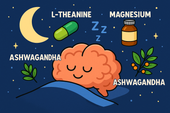
Nootropics That Promote Calm and Rest
Explore the world of calming nootropics — natural brain enhancers that promote relaxation, better focus, and deeper rest. Learn how L-Theanine, magnesium, ashwagandha, and other adaptogens help balance your nervous system, reduce stress, and support restorative sleep.
-
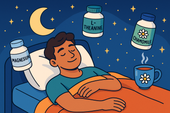
Best Natural Supplement Stack for Sleep
Discover the best natural supplement stack for deep, restorative sleep. Learn how nutrients like magnesium, L-theanine, glycine, and calming herbs such as chamomile and ashwagandha work together to relax your body, calm your mind, and improve sleep quality—naturally and safely.
-
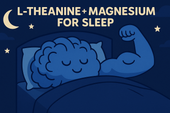
Combining L-Theanine and Magnesium for Sleep: A Calm Night, Naturally
Discover how combining L-Theanine and Magnesium can help you drift into deep, restorative sleep. Learn how this natural duo calms the mind, relaxes the body, and supports your nervous system—without grogginess the next morning.
-
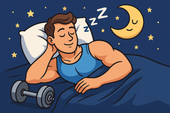
How to Sleep Better After Intense Workouts
Struggling to fall asleep after a tough workout? Learn how to optimize your post-training recovery with nutrition, hydration, and science-backed sleep strategies. Discover how to calm your nervous system, balance hormones, and wake up fully recharged for your next session.
-
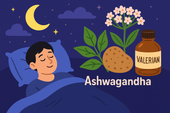
Ashwagandha and Valerian: A Bedtime Combo for Deep Rest and Emotional Reset
Discover the calming synergy of Ashwagandha and Valerian root, two natural sleep aids that help quiet the mind, ease anxiety, and promote deeper rest. Learn how this herbal duo supports the nervous system, balances stress hormones, and restores emotional peace — without next-day grogginess.
-

How to Create a Resilience-Boosting Diet
Discover how to build emotional and physical strength from the inside out with a resilience-boosting diet 🍎. Learn which foods stabilize your mood, how supplements like magnesium and omega-3s strengthen your stress response, and why pairing nutrition with breathwork and therapy creates lasting calm, focus, and vitality 🌿💪.
-
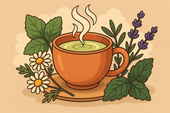
Best Teas and Herbal Blends for Calmness: Nature’s Way to Restore Inner Peace
Ashwagandha, the ancient adaptogenic herb, helps your body find balance during stress. Known as “Indian ginseng,” it supports cortisol regulation, boosts energy, and restores calm clarity. Discover how this powerful root promotes resilience, emotional balance, and steady vitality — one cup at a time. 🌸
-

Parenting and Emotional Strength: How to Raise Children Without Losing Yourself
Empathy is the bridge that connects hearts — the quiet power to understand, feel, and support another’s emotions without judgment. Learn how empathy strengthens relationships, enhances communication, and cultivates deeper compassion in everyday life. 🌿
-

How to Bounce Back from Public Failure: Reclaiming Confidence, Purpose, and Power
Visualization is more than imagination — it’s brain training for resilience. By picturing calm, success, or healing, you activate the same neural pathways as real experience. Learn how daily visualization rewires your brain for confidence, emotional balance, and recovery from stress. ✨
-

Coping with Financial Stress Through Resilience: How to Stay Grounded When Money Feels Tight
Body awareness is the foundation of emotional resilience. By tuning into your body’s signals — tension, fatigue, or calm — you learn to recognize stress before it overwhelms you. Discover how mindfulness, gentle movement, and breathwork can deepen your connection with your body and restore balance from the inside out. 🧘
-

How to Stay Positive During Chronic Illness: A Guide to Emotional Strength and Hope
Creativity is more than art — it’s a form of healing. Whether through painting, writing, music, or small acts of expression, creativity helps release emotion, calm the nervous system, and reconnect you to joy. Discover how to use creativity as a tool for emotional balance, resilience, and self-discovery. 🌿
-
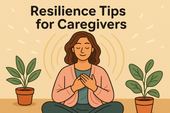
Resilience Tips for Caregivers: How to Stay Strong While Caring for Others
Joy isn’t the absence of pain — it’s the quiet strength to find light even in challenging times. Cultivating joy through small daily moments restores balance, releases stress, and reminds you of life’s beauty. Learn how to reconnect with authentic happiness, rebuild emotional energy, and nurture your nervous system through gratitude, presence, and play. 🌿
-

Building Resilience After a Breakup: How to Heal, Rebuild, and Rise Stronger
Social connection is one of the strongest predictors of emotional resilience. During difficult times, genuine relationships act as anchors — calming the nervous system, reducing stress hormones, and helping you regain perspective. Learn how cultivating real human connection can strengthen your mind, heart, and overall well-being. 🌿
-
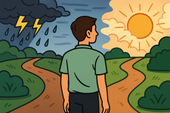
How to Stay Emotionally Strong During Job Loss
Your emotions are powered by brain chemistry — a delicate balance of neurotransmitters like serotonin, dopamine, and cortisol. When these chemicals work in harmony, you feel calm, focused, and resilient. Learn how daily habits, nutrition, and mindfulness can support your brain chemistry and boost emotional well-being naturally. 🌿
-
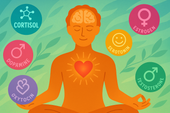
The Role of Hormones in Emotional Stability: How Your Chemistry Shapes Your Calm
Hormones shape more than your body — they shape your emotions, resilience, and sense of calm. From cortisol to serotonin, these chemical messengers influence how you react to stress, connect with others, and recover from challenges. Learn how to balance your hormones naturally to build lasting emotional stability and harmony within. 💫
-
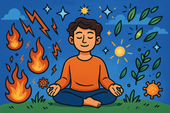
Mitochondria and Emotional Energy: The Cellular Power Behind Your Mood
Breathwork is one of the most powerful tools for emotional regulation and cellular balance. Through intentional breathing, you can calm your nervous system, increase oxygen flow to the brain, and even support mitochondrial energy. Learn how conscious breathing connects body and mind — transforming stress into presence and emotional strength. 🌿
-
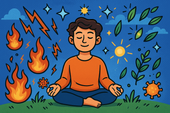
Inflammation and Its Impact on Mood Resilience: The Silent Link Between Body and Mind
Inflammation doesn’t just affect the body — it impacts the mind. Chronic inflammation alters brain chemistry, depletes serotonin, and makes emotional recovery harder. Learn how calming inflammation through nutrition, mindfulness, and sleep can restore balance, resilience, and a renewed sense of emotional strength. 💫
-
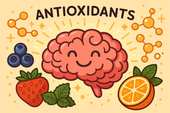
How Antioxidants Protect Emotional Well-being: The Hidden Link Between Oxidative Stress and Mental Health
Antioxidants do more than protect your body — they defend your mind. By neutralizing oxidative stress, antioxidants support serotonin, dopamine, and brain energy pathways that keep you calm, focused, and emotionally balanced. Discover how foods like berries, green tea, and dark chocolate nourish your brain, boost mood, and strengthen resilience from the inside out. 🌿✨
-
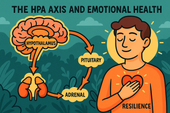
The HPA Axis and Emotional Health: The Hidden Bridge Between Stress and Mind
Neuroplasticity — the brain’s ability to rewire and adapt — is the foundation of emotional healing and resilience. When you face stress, trauma, or change, your neural pathways can reshape themselves to support new patterns of calm, focus, and self-awareness. Learn how daily practices like mindfulness, therapy, and breathwork strengthen neuroplasticity to transform emotional pain into personal growth. 🌸
-
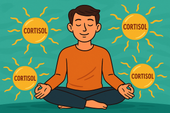
Why Cortisol Control Is Key to Resilience: Mastering Stress to Build Emotional Strength
Controlling cortisol — the body’s main stress hormone — is the secret to lasting resilience. When cortisol levels stay balanced, your mind becomes clearer, emotions steadier, and energy more sustainable. Learn how breathwork, mindset shifts, adaptogens, and daily rhythms can help you calm your stress response and build true inner strength. 🌞💪
-
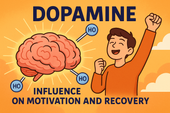
Dopamine’s Influence on Motivation and Recovery: Reigniting Drive and Balance
Healthy relationships are the foundation of emotional balance and resilience. Whether romantic, familial, or platonic, genuine connection releases dopamine, serotonin, and oxytocin — the brain’s “bonding trio” — helping us feel secure, motivated, and seen. Learn how trust, empathy, and communication not only strengthen your connections but also reshape your nervous system for deeper emotional well-being. 🌿🤝
-
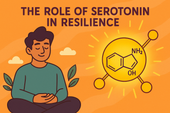
The Role of Serotonin in Resilience: How This “Mood Molecule” Shapes Emotional Strength
Serotonin — often called the “resilience molecule” — plays a vital role in how we handle stress, regulate mood, and recover from emotional challenges. Beyond happiness, this powerful neurotransmitter helps balance the gut-brain axis, stabilize the nervous system, and support emotional flexibility. Learn how nutrition, sunlight, mindfulness, and adaptogens can naturally boost serotonin and strengthen your emotional resilience. 🌞🧠
-
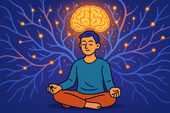
How Neuroplasticity Supports Emotional Growth: Rewiring the Brain for Resilience
Neuroplasticity is the brain’s built-in power to grow, adapt, and heal — and it’s the foundation of emotional transformation. Every mindful breath, compassionate act, or reframed thought strengthens new neural pathways that support resilience and self-awareness. Learn how your brain rewires through daily habits, helping you turn emotional challenges into opportunities for growth and calm. 🌿
-
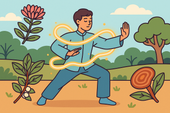
Tai Chi and Adaptogens for Mind-Body Balance: The Art of Harmonizing Energy and Resilience
Alchemy isn’t just an ancient science — it’s a timeless symbol of transformation and inner balance. By blending the physical and spiritual, alchemy teaches us that change begins from within. Just as metals are refined into gold, we too can transmute emotional pain, stress, and chaos into clarity and strength through mindful practice and self-awareness. 🌙✨
-

Cold Therapy and Emotional Control: Training the Mind Through the Body
Cold therapy isn’t just for athletes — it’s a tool for emotional mastery. By exposing your body to controlled cold, you train your nervous system to stay calm under stress, improving focus, mood, and resilience. This article explores the science of cold exposure, its impact on hormones and the vagus nerve, and how ice baths and cold showers can help you build emotional control, one breath at a time. 🧊🧘♂️
-

How Music Influences Emotional Recovery: The Healing Soundtrack of the Mind
Neuroplasticity — the brain’s ability to rewire and heal itself — is at the heart of emotional recovery. Through mindful habits, music, therapy, and consistent mental stimulation, your brain can form new connections that support resilience and well-being. Discover how neuroplasticity turns pain into growth, helping you rebuild balance, focus, and emotional strength. 🌿
-

Nature Therapy for Building Resilience: Reconnecting With the Healing Power of the Earth
Nature therapy helps rebuild emotional resilience by reconnecting you with the healing rhythms of the Earth. From forest walks to sunlight exposure, nature restores balance to your nervous system, lowers stress hormones, and teaches emotional adaptability. Learn how spending time outdoors can enhance mental clarity, calm anxiety, and awaken your natural capacity to heal. 🌞
-
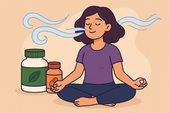
Breathwork Techniques That Pair with Supplements: The Ultimate Synergy for Stress Relief and Mental Clarity
Breathwork and supplements create a powerful mind-body synergy for stress relief, focus, and energy. By combining intentional breathing with adaptogens, nootropics, and calming nutrients, you can naturally regulate cortisol, sharpen mental clarity, and boost emotional balance. This guide explores the best breathwork techniques and supplement pairings to help you feel centered, calm, and energized from the inside out. 🌿
-
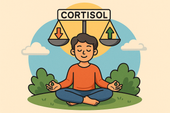
Why Cortisol Balance Matters for Emotional Strength
Balancing cortisol — your body’s main stress hormone — is essential for emotional resilience. When cortisol is chronically high, your mind stays stuck in survival mode, leading to fatigue, anxiety, and emotional instability. This article explores how nutrition, supplements, breathwork, and therapy can help restore healthy cortisol rhythms, regulate the nervous system, and strengthen your ability to handle life’s challenges with calm focus and emotional strength. 🌿
-

Best Supplements for Students During Exam Season: Focus, Energy, and Memory Support
Studying late into the night? Learn which natural supplements can boost focus, memory, and mental stamina during exam season — without the crash. From omega-3s to Bacopa and Rhodiola, discover your brain’s ultimate exam support stack. 🎓🧠
-
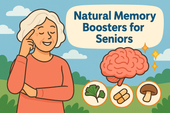
Natural Memory Boosters for Seniors: How to Keep Your Mind Sharp and Focused
Stay mentally sharp and confident as you age. Discover science-backed natural supplements and lifestyle habits that boost memory, focus, and brain longevity for seniors. 🌿🧠
-
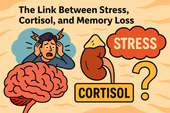
The Link Between Stress, Cortisol, and Memory Loss
Chronic stress can quietly erode your memory — and cortisol is the key culprit. Learn how stress hormones affect the brain, why the hippocampus shrinks under pressure, and how natural strategies can help you restore memory and mental clarity. 🧠✨
-
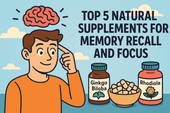
How to Build a Daily Supplement Routine for Memory Health
Want to sharpen your memory and stay mentally clear? Learn how to build a daily supplement routine for memory health — from morning focus to nighttime brain repair. Discover science-backed nutrients that boost recall, focus, and long-term cognitive resilience. 🧠🌿
-
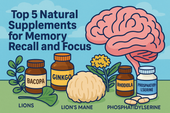
Top 5 Natural Supplements for Memory Recall and Focus
Looking to boost memory and concentration naturally? Discover the top 5 supplements — Bacopa, Ginkgo Biloba, Lion’s Mane, Rhodiola, and Phosphatidylserine — that enhance focus, recall, and long-term brain health. 🧠✨
-
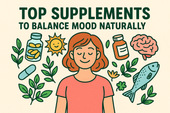
Top Supplements to Balance Mood Naturally
From omega-3s to adaptogens, discover the top natural supplements proven to support emotional balance, reduce stress, and promote inner calm — safely and effectively. 🌿✨
-

Can Omega-3 Fatty Acids Help with Mood Disorders?
Omega-3 fatty acids do more than support heart health — they can help balance mood, reduce depression, and calm anxiety. Discover how EPA and DHA nourish your brain, fight inflammation, and support emotional well-being from within. 🌊🧠
-

Vitamin D and Mood: The Sunshine Vitamin for Emotional Balance
Could the key to emotional balance be as simple as a little sunlight? Discover how vitamin D — the sunshine vitamin — influences serotonin, reduces inflammation, and helps you feel more positive and resilient year-round. ☀️💛
-

The Role of Magnesium in Reducing Irritability and Low Mood
Feeling on edge or emotionally drained? Magnesium could be the missing link between your body and your mood. Discover how this essential mineral reduces irritability, balances neurotransmitters, and helps your nervous system find calm again. 🌿✨
-
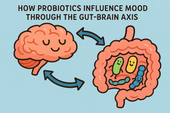
How Probiotics Influence Mood Through the Gut-Brain Axis
Discover how probiotics can do more than support your digestion—they can actually uplift your mood. This article explores the fascinating gut-brain axis and how balancing your gut bacteria through probiotics may help reduce anxiety, improve emotional stability, and support long-term mental well-being. 🌿🧠
-
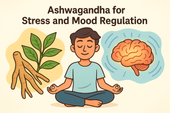
Ashwagandha for Stress and Mood Regulation
Discover how Ashwagandha, the powerful adaptogenic herb 🌿, helps your body manage stress and regulate mood. Learn how it balances cortisol, boosts GABA and serotonin, and supports emotional stability — helping you feel calm, focused, and resilient every day.
-
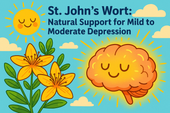
St. John’s Wort: Natural Support for Mild to Moderate Depression
Discover how St. John’s Wort, the “sunshine herb” 🌼, naturally supports mild to moderate depression. Learn how it boosts serotonin, balances mood, and promotes emotional resilience — with research showing its effectiveness compares to antidepressants, but with fewer side effects.
-
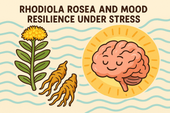
Rhodiola Rosea and Mood Resilience Under Stress
Discover how Rhodiola rosea helps your body adapt to stress 🌿. Learn how this powerful adaptogen balances cortisol, supports serotonin and dopamine, and strengthens emotional resilience — helping you stay calm, focused, and energized under pressure.
-
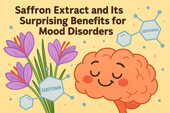
Saffron Extract and Its Surprising Benefits for Mood Disorders
Discover how saffron extract — the golden spice of joy 🌸 — can naturally support mood balance, ease anxiety, and lift mild depression. Learn what science says about its serotonin-boosting power, the ideal dosage, and how this ancient remedy compares to modern antidepressants.
-
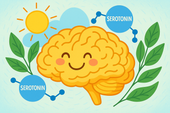
5-HTP and Serotonin: A Natural Path to Lifting Mood
Discover how 5-HTP naturally boosts serotonin 🌞 — the neurotransmitter behind mood, sleep, and emotional balance. Learn how this plant-derived compound supports happiness, reduces anxiety, and improves rest by helping your brain create more serotonin the gentle, natural way.
-
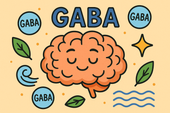
GABA Supplements for Reducing Anxiety and Mood Swings
Discover how GABA supplements can help reduce anxiety and balance mood naturally 🌿. Learn how this calming neurotransmitter works to quiet the mind, ease stress, and improve sleep — plus which nutrients and habits can boost your body’s own GABA production for long-term emotional stability.
-
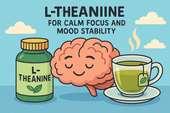
L-Theanine for Calm Focus and Mood Stability
Discover how L-theanine, the calming compound found in green tea 🍵, promotes focus, relaxation, and mood stability. Learn the science behind how it balances neurotransmitters, reduces stress hormones, and enhances clarity — helping you stay centered, calm, and productive without sedation.
-
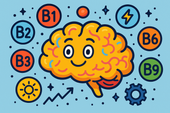
B Vitamins and Brain Chemistry: Supporting Energy and Emotional Balance
Discover how B vitamins power your brain chemistry ⚡. Learn how B6, B9, and B12 support serotonin, dopamine, and energy production — helping boost focus, mood, and emotional balance. From diet to supplements, explore how this vital nutrient group keeps your mind resilient and your energy steady.
-

N-Acetyl Cysteine (NAC) and Mood Disorders: What the Research Says
Learn how N-Acetyl Cysteine (NAC) supports brain health and mood balance 🧠. Discover how this antioxidant helps reduce oxidative stress, regulate glutamate, and improve emotional stability in depression, bipolar disorder, and anxiety — backed by cutting-edge psychiatric research.
-

Supplements for Bipolar Disorder: What May Support Stability
Discover the best supplements for bipolar disorder 🌿 that may support emotional stability and brain health. Learn how nutrients like omega-3s, magnesium, vitamin D, and NAC can help reduce inflammation, balance neurotransmitters, and complement traditional treatment safely.

















































